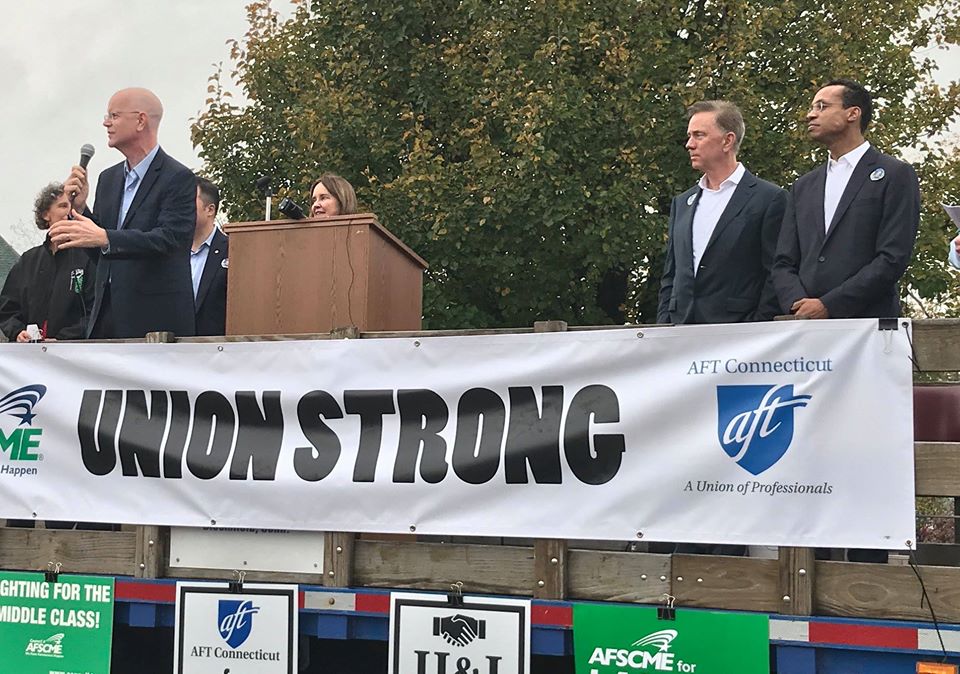Nearly 75 percent of Connecticut’s public-sector workforce is part of a union, according to new numbers released by Unionstats.com, making Connecticut’s government workforce the most unionized in the country.
The figures derived from 2020 Current Population Survey by the U.S. Census Bureau show that 74.1 percent of Connecticut’s state and local government employees are union members, beating out runner-up New York by four percentage points.
In total, only 18.4 percent of Connecticut’s total workforce was part of a union, with 8.6 percent of the private sector, 22.4 percent of construction and 13.9 percent of manufacturing employees being unionized, according to the data.
Nationally, union membership has been on the decline. According to Unionstats’ historical data, union membership across all sectors has declined from 23.8 percent in 1977 to 10.8 percent in 2020.
However, nationally, public-sector union membership has seen a slight uptick over the same time period, rising from 32.8 percent in 1977 to 34.8 percent in 2020. During that time the size of the public-sector employment also increased by more than 5 million workers.
In Connecticut, public-sector union membership grew from 62.9 percent in 1983 (the earliest state-specific statistics available) to 72.1 percent in 2020, while union membership in every other sector declined.
Union representation among Connecticut’s state workforce, in particular, has been increasing as new agreements with labor have allowed for managers in Connecticut’s state agencies to join labor unions, including assistant attorneys general, and other positions not previously unionized.
The Labor and Public Employees Committee also voted to pass a bill that would increase unions’ access to new and existing employees.
Senate Bill 908 requires public employers to supply unions with public employees’ contact information regularly, give union representatives access to new employee orientations, codify union dues authorizations into state law and force the employer to rely solely on the union as to who to deduct union dues from.
The bill is a response to the 2018 Supreme Court decision in Janus v. AFSCME, which ruled that public-sector employees could not be forced to pay union dues or fees as a condition of employment.
The Labor Committee, which is heavy with former union officials like Sen. Julie Kushner, D-Danbury, and Rep. Michael Winkler, D-Vernon, voted to send the bill to the Senate.
Ranking member Sen. Rob Sampson, R-Wolcott, remarked that he saw the legislation as “anti-worker” and said he will fight the bill on the Senate floor.
“What this bill does essentially is create a municipal mandate to require information be provided to unions at taxpayer expense, and it creates a set of rules that are completed one-sided in favor of the union against the employee,” Sampson said.
Kushner disagreed, saying “I believe the most important aspect of this bill is to ensure that every worker has equal opportunity to hear both from the employer and from the union.”
“While this bill does provide neutrality, that the employer should not influence an employee’s view on this, it is really important that people have information from the union to really understand what it is about,” Kushner said.
Previous iterations of the bill were passed by the Labor Committee in 2019 and 2020.
Other states with high public-sector union membership included New York (68.3 percent), Rhode Island (67.2 percent), Minnesota (61.5 percent) and New Jersey (59.2 percent), while South Carolina had the lowest public-sector union membership at 8 percent.
The average state government union membership across all states and Washington D.C. was 31.9 percent, according to the figures.
Unionstats.com was created in 2002 by Barry Hirsch of the Andrew Young School of Policy Studies at Georgia State University and David Macpherson of Trinity University’s Department of Economics.


Daniel Cole
June 29, 2022 @ 3:48 am
that is why the cost of living in connecticut is so high and unbearable to private sector workers……connecticut is just like a public union dictatorship with a state employee controlled puppet posing as governor and a puppet treasurer too…..eventually there will be nobody left here but public employees and illegal aliens hiding here…..that’s why a tiny state like connecticut is now $37 billion in the hole in long term bonded debt !